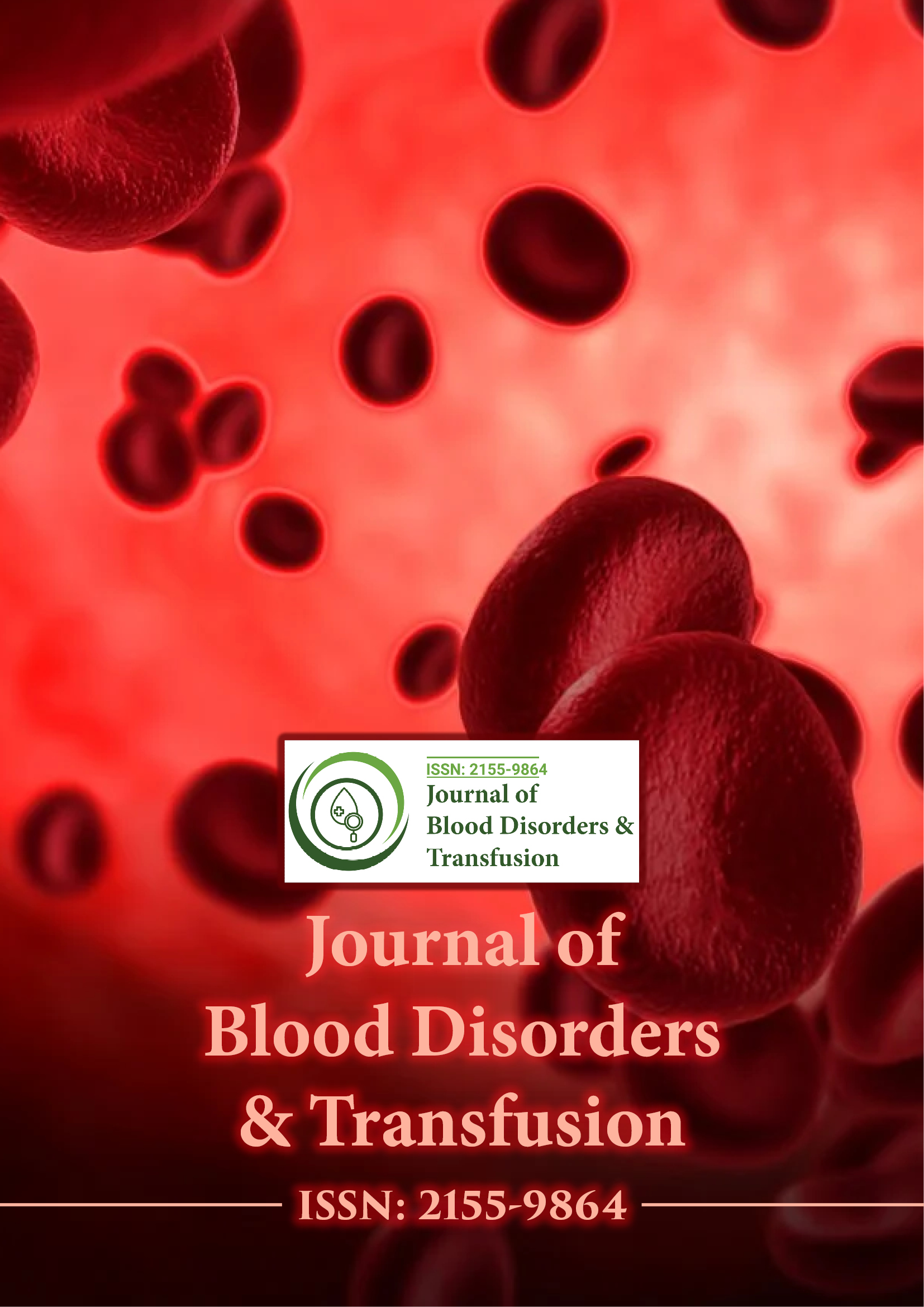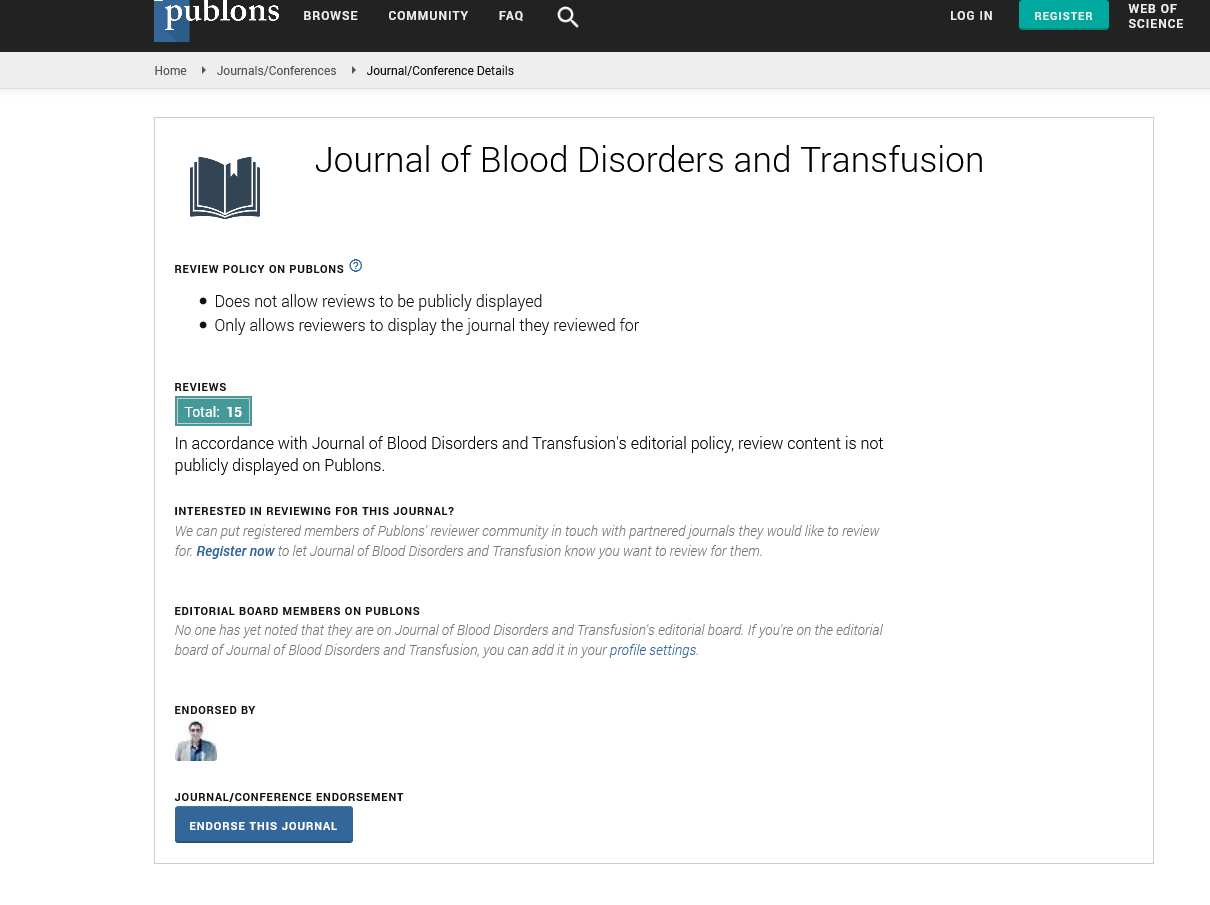Indexed In
- Open J Gate
- Genamics JournalSeek
- JournalTOCs
- Ulrich's Periodicals Directory
- RefSeek
- Hamdard University
- EBSCO A-Z
- OCLC- WorldCat
- Proquest Summons
- Publons
- Geneva Foundation for Medical Education and Research
- Euro Pub
- Google Scholar
Useful Links
Share This Page
Journal Flyer

Open Access Journals
- Agri and Aquaculture
- Biochemistry
- Bioinformatics & Systems Biology
- Business & Management
- Chemistry
- Clinical Sciences
- Engineering
- Food & Nutrition
- General Science
- Genetics & Molecular Biology
- Immunology & Microbiology
- Medical Sciences
- Neuroscience & Psychology
- Nursing & Health Care
- Pharmaceutical Sciences
Perspective - (2024) Volume 15, Issue 4
The Pathophysiology of Hemolytic Anemia: A Comprehensive Overview
Palmer Hymen*Received: 22-May-2024, Manuscript No. JBDT-24-26133; Editor assigned: 24-May-2024, Pre QC No. JBDT-24-26133 (PQ); Reviewed: 14-Jun-2024, QC No. JBDT-24-26133; Revised: 21-Jun-2024, Manuscript No. JBDT-24-26133 (R); Published: 28-Jun-2024, DOI: 10.4172/2155-9864.24.15.590
Description
Hemolytic anemia is a condition characterized by the premature destruction of red blood cells (erythrocytes), leading to a decrease in their lifespan and subsequent reduction in the oxygen-carrying capacity of the blood. This disorder can result from a variety of intrinsic defects within the red blood cells themselves or extrinsic factors that cause their premature destruction. Understanding the pathophysiology of hemolytic anemia involves exploring both the mechanisms underlying red blood cell destruction and the compensatory responses of the body.
Mechanisms of red blood cell destruction: Intrinsic causes
Inherited disorders such as hereditary spherocytosis or elliptocytosis result from defects in proteins that maintain the structural integrity of the red blood cell membrane. These defects lead to increased vulnerability of the red blood cells to mechanical stress, resulting in their premature destruction within the bloodstream or spleen.
Enzyme deficiencies: Disorders such as Glucose-6-Phosphate Dehydrogenase (G6PD) deficiency or pyruvate kinase deficiency impair specific enzymatic pathways necessary for red blood cell metabolism and survival. Without these enzymes, red blood cells are unable to maintain their integrity and are prone to premature destruction.
Hemoglobinopathies: Conditions such as sickle cell disease or thalassemia involve abnormal hemoglobin molecules that affect the structure and function of red blood cells. These abnormal hemoglobins can lead to increased red blood cell fragility and susceptibility to destruction.
Extrinsic causes
Immune-mediated: Autoimmune hemolytic anemia occurs when the immune system mistakenly targets and destroys its own red blood cells. Antibodies produced by the immune system recognize antigens on the surface of red blood cells, leading to their destruction by macrophages primarily in the spleen.
Infections: Certain infections, such as malaria or bacterial infections like Clostridium perfringens, can induce hemolytic anemia through direct invasion of red blood cells or by triggering immune responses that lead to their destruction.
Toxins and medications: Exposure to toxins (e.g., lead) or certain medications (e.g., antibiotics, chemotherapy drugs) can cause oxidative damage to red blood cells, leading to their premature destruction.
Compensatory mechanisms
In response to the accelerated destruction of red blood cells, the body activates compensatory mechanisms to maintain adequate tissue oxygenation and red blood cell production:
Reticuloendothelial System (RES): Macrophages within the spleen, liver, and bone marrow lead a significant role in recognizing and phagocytosing damaged red blood cells. This process removes cellular debris and recycles components such as iron for reuse in red blood cell production.
Bone marrow response: Increased destruction of red blood cells stimulates the bone marrow to produce and release reticulocytes (young red blood cells) into circulation. These reticulocytes mature into erythrocytes more rapidly than usual to compensate for the loss of red blood cells.
Erythropoietin production: Erythropoietin, a hormone produced by the kidneys in response to low oxygen levels, stimulates the bone marrow to increase red blood cell production. In hemolytic anemias, elevated erythropoietin levels help to compensate for the decreased lifespan of red blood cells.
Clinical implications
The pathophysiology of hemolytic anemia manifests clinically with a range of signs and symptoms depending on the severity and underlying cause of the condition:
Anemia symptoms: Fatigue, weakness, pallor, and shortness of breath due to reduced oxygen-carrying capacity.
Treatment strategies
Treatment of hemolytic anemia aims to address the underlying cause and alleviate symptoms:
Intrinsic causes: Management may include supportive care, splenectomy (in cases of severe hemolysis and splenomegaly), and genetic counseling for inherited disorders.
Extrinsic causes: Treatment focuses on removing the triggering agent, immunosuppressive therapy (in autoimmune hemolytic anemia), and supportive measures such as blood transfusions or erythropoietin therapy.
In conclusion, understanding the pathophysiology of hemolytic anemia involves recognizing the diverse mechanisms that lead to the premature destruction of red blood cells and the compensatory responses that attempt to maintain red blood cell homeostasis. This knowledge informs targeted diagnostic approaches and customized therapeutic strategies aimed at improving outcomes for individuals affected by this complex hematologic disorder.
Citation: Hymen P (2024) The Pathophysiology of Hemolytic Anemia: A Comprehensive Overview. J Blood Disord Transfus. 15:590.
Copyright: © 2024 Hymen P. This is an open-access article distributed under the terms of the Creative Commons Attribution License, which permits unrestricted use, distribution, and reproduction in any medium, provided the original author and source are credited.

